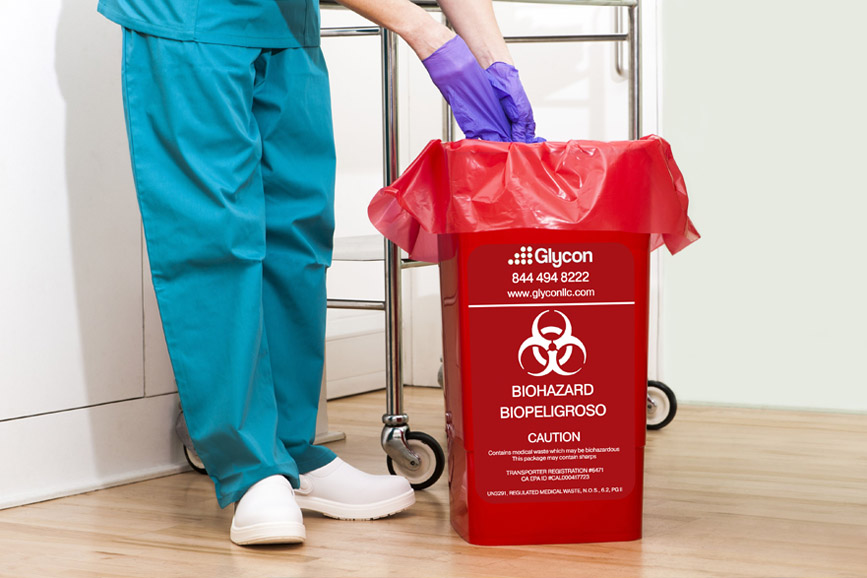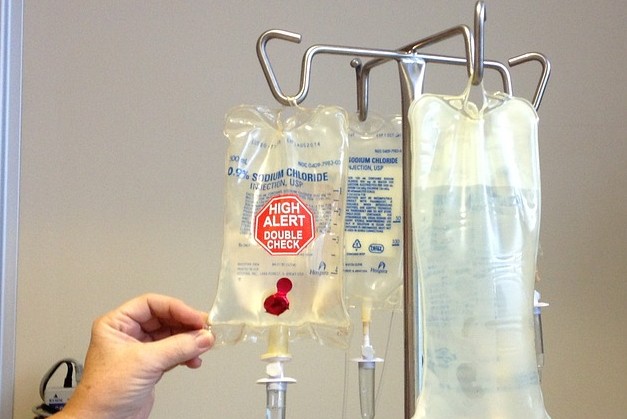Community Care: Smooth and Reliable Medical Waste Removal Near Me
Community Care: Smooth and Reliable Medical Waste Removal Near Me
Blog Article
Stay Ahead of Rules: Professional Advice on Medical Waste Disposal
In a world where the health care industry is regularly advancing, it is imperative for medical facilities to remain ahead of regulations when it pertains to the appropriate disposal of medical waste. With rigorous standards and frequent regulatory modifications, it can be challenging to browse the complexities of this procedure. With expert recommendations, facilities can guarantee conformity and alleviate risks connected with inappropriate waste disposal. From comprehending the different classifications of clinical waste to executing the ideal collection and segregation methods, this discussion will certainly supply actionable tips and beneficial understandings to assist facilities remain ahead of policies in the ever-changing landscape of medical waste disposal.
Comprehending Clinical Waste Categories
Recognizing medical waste categories is necessary for correct disposal and management in medical care facilities. Clinical waste describes any type of waste produced by healthcare activities that may posture a risk to public wellness or the environment. It is critical to categorize clinical waste precisely to guarantee its safe handling, disposal, transportation, and therapy.
There are several groups of clinical waste that medical care centers need to be familiar with. The most typical categories consist of transmittable waste, pathological waste, sharps waste, pharmaceutical waste, and chemical waste. Each group has certain guidelines and laws for its proper monitoring and disposal.
Pathological waste refers to human cells, body organs, or body components that require special handling and disposal. Drug waste makes up run out, extra, or contaminated medicines that require cautious handling and disposal.
Remaining Up-To-Date With Regulatory Changes
Staying present with regulative adjustments is vital for healthcare centers to make certain conformity and correct monitoring of clinical waste disposal. medical waste removal service. With laws regularly progressing, it is essential for healthcare facilities to remain up-to-date to avoid charges, penalties, and possible damage to the atmosphere and public health
To remain ahead of governing modifications, medical care facilities must establish a system for monitoring and tracking updates. This can be done by subscribing to governing e-newsletters, going to workshops and seminars, and actively participating in market organizations. Furthermore, centers ought to assign a staff member or team accountable for staying educated and disseminating info to pertinent stakeholders.
Regular communication with governing agencies is additionally vital. Medical care centers should develop connections with local, state, and government firms to guarantee they understand any kind of adjustments in laws that might influence their waste management methods. This can be done with normal meetings, engagement in public comment durations, and proactive engagement with regulative companies.
In addition, healthcare facilities should think about partnering with waste monitoring firms that concentrate on clinical waste disposal (medical waste disposal services with WasteX). These companies are frequently fluent in the most up to date regulations and can give assistance and assistance to make certain compliance
Implementing Proper Collection and Segregation Techniques
To properly manage medical garbage disposal, healthcare facilities have to establish proper collection and partition methods in accordance with regulatory standards. Implementing these methods ensures the risk-free handling and disposal of possibly dangerous products, protects the atmosphere, and lessens the threat of injuries and infections to healthcare workers and the general public.
Correct collection and segregation methods entail the usage of great post to read marked containers and labeling systems. Medical care centers must supply clearly classified containers for various sorts of clinical waste, such as sharps, transmittable waste, pharmaceutical waste, and non-hazardous waste. These containers need to be color-coded and clearly marked to avoid complication and promote easy recognition.
Furthermore, medical care centers should train their staff on the appropriate procedures for accumulating and segregating medical waste. This consists of enlightening them on the different sorts of waste, the appropriate containers to use, and the significance of complying with standards and laws. Regular training sessions and correspondence course must be performed to guarantee that personnel remain updated on best practices.
Moreover, healthcare facilities should establish a system for normal collection and disposal of medical waste. This may involve partnering with qualified waste monitoring companies that specialize in clinical garbage disposal. These companies will guarantee that the collected waste is transported and thrown away in conformity with regulatory requirements.
Picking the Right Disposal Techniques

Incineration is one of one of the most usual and effective approaches for taking care of particular types of clinical waste, such as pathological waste and sharps. It includes the controlled burning of waste at high temperatures, minimizing it to ash. Incineration can launch harmful toxins right into the air and contribute to air pollution.

Chemical treatment entails the usage of chemicals to neutralize the waste and disinfect. Microwave treatment makes use of microwave power to warmth and sanitize the waste.
Making Certain Conformity Via Documents and Training
After very carefully taking into consideration the suitable disposal techniques for medical waste, healthcare facilities must guarantee conformity with laws and lessen environmental impact by implementing reliable documents and training treatments. This action is essential in keeping a lasting and risk-free environment for both medical care workers and the general public.

Medical care workers who take care of medical waste should receive appropriate training on waste partition, handling, and disposal procedures. By giving detailed training, healthcare facilities can equip their personnel to make enlightened decisions and minimize the threat of improper waste disposal.
Verdict
To conclude, staying ahead of guidelines in clinical waste disposal is critical for health care centers. medical waste removal service. Recognizing the various categories of clinical waste, remaining upgraded with regulatory modifications, executing correct collection and segregation methods, picking the appropriate disposal approaches, and making sure compliance through paperwork and training are all essential steps. By adhering to these standards, medical care organizations can effectively manage and dispose of medical waste in a secure and accountable way
From comprehending the different groups of clinical waste to carrying out the right collection and segregation techniques, this conversation will offer actionable pointers and important understandings to help facilities remain in advance of guidelines in the ever-changing landscape of medical waste disposal. - medical waste disposal services with WasteX
The most common classifications consist of contagious waste, pathological waste, sharps waste, pharmaceutical waste, and chemical waste. Medical care centers must supply plainly identified containers for various types of medical waste, such as sharps, infectious waste, pharmaceutical waste, and non-hazardous waste. Health care facilities should develop a comprehensive system to record and track all elements medical waste disposal services with WasteX of clinical waste disposal, including kinds of waste generated, quantities, and disposal techniques used. Healthcare workers that manage clinical waste needs to obtain ideal training on waste partition, handling, and disposal procedures.
Report this page